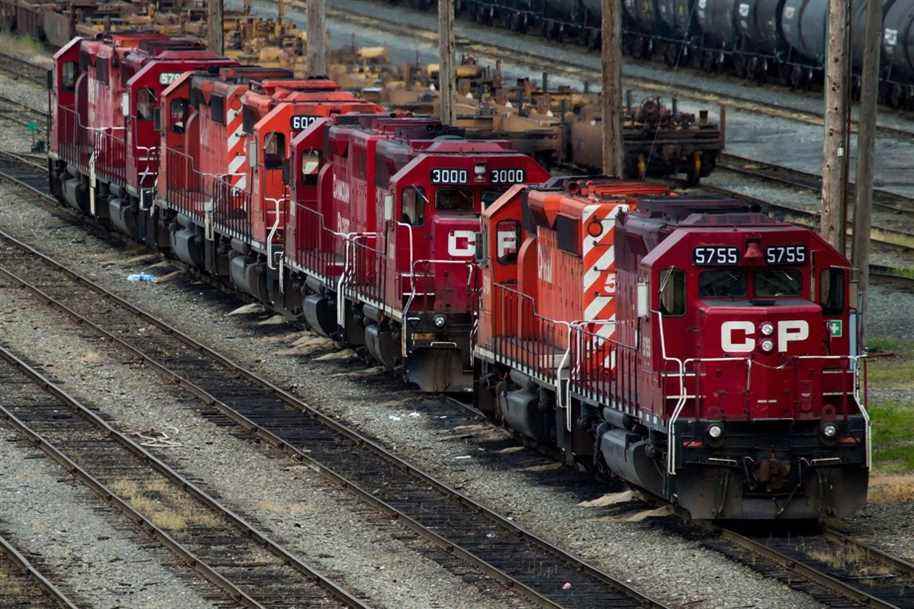The first trains have arrived in Vancouver since floods and landslides cut key supply links in southern British Columbia, the Canadian Pacific Railway said on Wednesday.
CP cars filled with prairie grain and fuel entered the port city on Wednesday morning, after limited service resumed on reclaimed tracks.
The Calgary rail carrier said its rail corridor suffered damage at around 30 locations between Vancouver and Kamloops, British Columbia, with “a significant loss of infrastructure” for 20 of them.
“The next few days are going to be critical to synchronize the entire supply chain,” spokeswoman Salem Woodrow said in a telephone interview.
Hundreds of employees and contractors worked tirelessly to repair rail tracks after torrential rains and mudslides engulfed streets and devastated highways, dragging CP rail cars and at least one locomotive with them. along the Fraser Canyon near Hope, BC.
East of Lytton, British Columbia, rails remain suspended over a section of the Trans-Canada Highway that was swept away by a landslide.
Starting November 14, flooding disrupted the flow of goods between Canada’s largest port and the Okanagan Valley region of British Columbia, forcing the displacement of hundreds of residents and stranding thousands of people. , in addition to killing at least four people.
The Canadian National Railway Company (CN) said on Tuesday it also plans to restore “limited” service on Wednesday along its rail corridor in southern British Columbia.
John Gradek, a transportation expert and former senior manager at CP, says questions remain about short-term traffic capacity and long-term infrastructure resilience.
“The tracks may be open, but (the two carriers) are still not moving the same volume as before,” he said.
Sections of the corridors operated by CP and CN run along the Fraser River east of Vancouver. Others meander through avalanche-prone peaks protected by “snow shelters” – a tunnel-like surface covering the track – or along thin plateaus between the river and the mountains.
“It is the erosion of the river bed, attributable to flooding, which created these spaces […] So they were literally building on floodplains. They are building in risky territories when they do this, ”said Gradek.
“It might be necessary to go back and examine the topography of these tracks to understand what kind of infrastructure we can design or build to protect ourselves from landslides. ”
